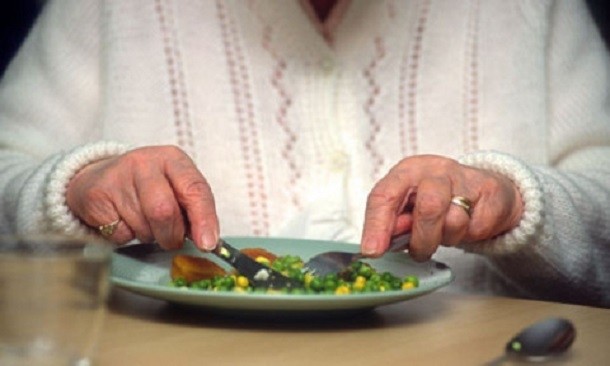Finger foods may be best for people with Alzheimer's

Research investigating the attractiveness factors of finger foods to Alzheimer's disease (AD) patients has suggested that offering a choice of foods that enable people with the condition to eat alone with their fingers, rather than with cutlery, could help them to regain autonomy and 'rediscover the pleasure of eating on their own' - which in turn could bring about an increase in food consumption.
Led by Julio Mendoza from the University of Guelph, Canada, the research team tested how altering three parameters for the formulation of finger foods (the addition of a sauce, changes to shape, and contrast) affected the way AD patients chose and consumed meals - finding that a finger foods with a sauce (vs. no sauce) and with two layers (vs. one layer where all ingredients were mixed) were more frequently chosen first and then consumed by people with the condition.
"These findings support the view that Alzheimer's patients are able to make food choices when offered alternatives; choosing first and consuming more of the alternatives most attractive to them," said Mendoza and his team.
"The provision of attractive finger foods is essential to ensuring that these patients will be willing to choose and consume them," they added.
Writing in Food Quality and Preference the team behind the study also added that their findings could pave the way towards the development of new foods for use in geriatric institutions "that will enhance the attractiveness of foods to people with AD and improve their nutritional status."
Alzheimer's impairment
The team noted that eating can be difficult for people with AD because of the psychological, physiological and physical changes that occur with age and disease. Indeed, they noted that the cognitive impairments associated with AD can change food relationships for several reasons - including a loss of concentration during mealtimes, difficulties expressing feelings or needs, problems identifying foods or an inability to use cutlery properly.
"There is every reason to believe that finger foods can help people with AD to improve their autonomy and increase their food intake," wrote Mendoza and his team. "Finger foods can therefore constitute a real added value for healthcare professionals as this solution can integrate a care strategy which addresses the eating difficulties encountered by their AD patients during mealtimes, while at the same time sustaining their ability to eat alone and exercise their free will."
"To our knowledge, no scientific research has yet been carried out on how finger foods should be offered to AD patients," they added. "In particular, very few studies have tried to determine the modulation of sensory properties when AD patients eat finger foods and how attractive they are to these patients."
Study details
In order to study finger food attractiveness among people with AD, the team performed an indirect evaluation - using the theory that the more attractive the finger foods, the more the people would choose and consume them.
The three selected parameters - the addition of a sauce (with vs. without), or a change in shape (squared vs. moulded) or contrast (in one vs. two layers) - were studied separately using paired comparison tests in real-life mealtime situations. Tests were performed using 114 AD patients during 12 lunch-times over a 4-week period.
The team revealed that different first choices and consumption levels were observed for the three formulation parameters, and after analysis of these levels for all the weeks of the experiment together, the results showed:
- a positive effect of the presence of sauce (vs. absence)
- no effect of shape (squared vs. moulded)
- a positive effect of a presentation in two layers (vs. one).
"Our findings underlined the importance of the presence of sauce and a presentation in two layers of separate ingredients to the attractiveness of finger foods to elderly AD patients, which could be explained by some low level factors (sensory factors and accessibility) and a high level of perception (cognitive factors)," added Mendoza and his team.
"This study did not permit any conclusions regarding the potentially positive effect of finger foods when compared with the meals normally served in nursing homes. However, the average finger food consumption rate, and the low rates of refusal seen among participants, demonstrated that the finger foods formulated for this study were not rejected," they said.
Source: Food Quality and Preference
Published online ahead of print, doi: 10.1016/j.foodqual.2013.12.011
"Attractiveness and consumption of finger foods in elderly Alzheimer’s disease patients"
Authors: Virginie Pouyet, Agnès Giboreau, et al













